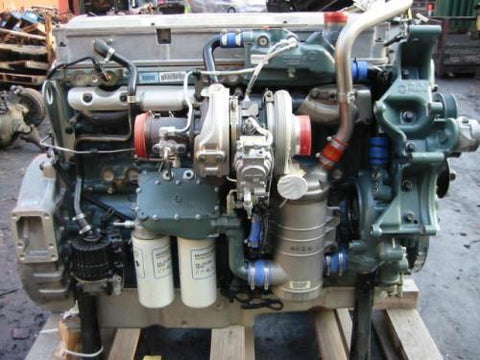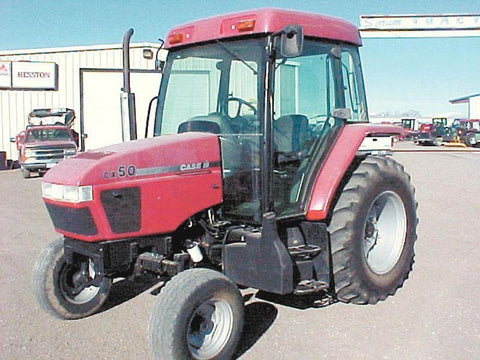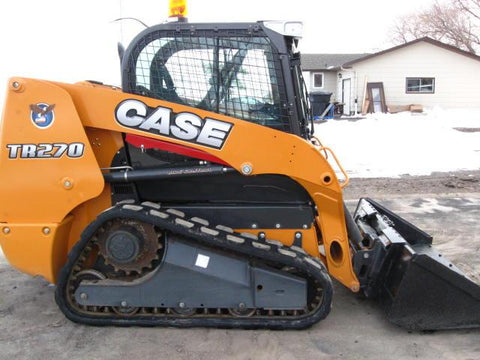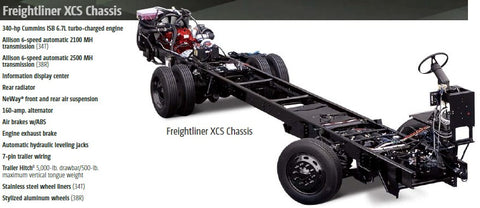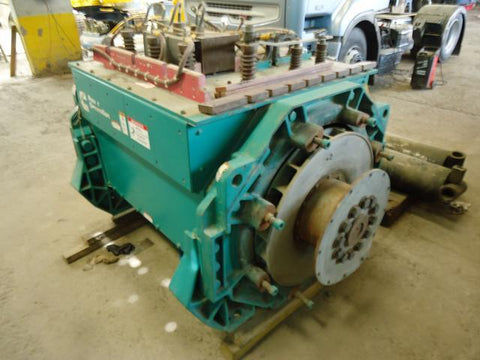
Cummins QSK60 (DQKH) Control System PowerCommand Control 3201

Cummins QSK60 (DQKH) Control System PowerCommand Control 3201
The Best PDF Manuals Online Includes : Bookmarks + Searchable Text + Index = Fast Navigation And Best Organization !
Before operating the genset, read this manual and become familiar with the equipment and its operation (including all controls, manually operated valves and shutdown devices).
Correct operation and maintenance is essential for safe and efficient operation of this
unit.
This PDF file is Bookmarked and SEARCHABLE to make what you need easy to find.
Models And Serials :
Publication No. 3549(GB)
CONTENTS :
Schedule of Abbreviations
1 Safety
1.1 Warning, Caution and Note Styles Used In This Manu
1.2 Warnings
1.3 General Information
1.4 Generator Plant Safety Code
2 Introduction
2.1 General
2.2 Generating Set Identification
2.3 After Sales Services
2.3.1 Maintenance
2.3.2 Warranty
2.3.3 Spares
2.3.4 Overseas
3 System Overview
3.1 Generator Components – Typical Genset
3.1.1 Control System
3.1.2 Engine
3.1.3 Alternator
3.1.4 Generator Rating
3.1.5 Generator Construction
3.1.6 Fuel System
3.1.7 Cooling System
3.1.8 Engine Exhaust (Option)
3.1.9 DC Electrical System
3.1.10 Alarm Module (Option)
3.1.11 Sensors/Senders
3.2 Heaters
3.2.1 Engine Heater (Option)
3.2.2 Alternator Heater (Option)
3.2.3 Control Panel Heater (Option)
3.3 Mains Powered Battery Charger (Option)
3.3.1 Operation
3.3.2 Boost Charge (Option)
4 Control System
4.1 Control System Description
4.1.1 Control Panel Power ON/OFF Modes
4.1.2 Control Panel - Front Panel
4.1.3 Control Panel - Operator Panel
4.1.4 Control Panel - Switch Panel
4.2 Menu Display and Switches
4.2.1 Graphical Display
4.2.2 Menu Buttons
4.3 Menu Units Selection
4.3.1 Local/Remote Field
4.4 Main Menu
4.4.1 Adjust Button
4.4.2 Set-up Button
4.4.3 _\_ Button (Paralleling applications only)
4.4.4 Power Trans Button (PTC applications only)
4.5 Engine Data Submenus
4.6 Alternator Data Submenus
4.6.1 Voltage L–L and L–N
4.6.2 Amps
4.6.3 Frequency
4.6.4 AVR Duty Cycle
4.6.5 kW, kVA and PF
4.7 Control Submenu
4.7.1 Local Control Submenu Function
4.7.2 Remote Control Submenu Functions
4.7.3 Local/Remote Control Submenu Function
4.8 History/About Submenus
4.8.1 History
4.8.2 About
4.8.3 Fault History
4.9 Adjust Sub-menu
4.10 Parallel Data Submenu
4.10.1 Parallel Data Status Line
4.11 Password Menu
4.12 Power Transfer Main Menu
4.12.1 PTC Status Line
4.12.2 Utility (PWR TRAN) Submenus
4.12.3 Status (PWR TRAN) Submenus
4.12.4 Transfer Control (PWR TRAN) Submenu
4.12.5 Genset (PWR TRAN) Submenus
5 Operation
5.1 Safety
5.2 Introduction
5.3 Maintenance
5.4 Operating Recommendations
5.4.1 Running-in
5.4.2 No Load Operation
5.4.3 Exercise Period
5.4.4 Low Operating Temperatures
5.4.5 High Operating Temperatures
5.4.6 Genset Standby Rating
5.4.7 De-rating Factors
5.5 Genset Operation
5.5.1 Sequence of Operation
5.6 Starting
5.6.1 Pre-start Checks
5.6.2 Starting at Switch Panel (Manual Mode)
5.6.3 Starting at Remote Operator Panel (Auto Mode)
5.6.4 Starting from Remote Location (Switch or Device) (Auto Mode)
5.6.5 Exercise Start
5.6.6 Cold Starting with Loads
5.7 Running at Idle (Manual)
5.8 Stopping
5.8.1 Emergency Stop (Code 1434)
5.8.2 Stopping at Switch Panel (Manual Mode)
5.8.3 Stopping at Remote Operator Panel (Auto Mode)
5.8.4 Stopping from Remote Location (Switch or Device) (Auto Mode)
5.9 Optional Power Transfer Control (PTC) Operation
5.9.1 PCC3201/PTC – Normal Operation Sequences
5.9.2 Test Switch
6 Maintenance
6.1 General
6.2 Genset Specifications
6.3 Maintenance Schedules
6.4 Locking the Genset Out of Service
6.4.1 Introduction
6.4.2 Immobilising the Plant for Safe Working
6.5 General Inspection
6.5.1 Exhaust System
6.5.2 Fuel System
6.5.3 AC Electric System
6.5.4 DC Electrical System
6.5.5 Engine
6.5.6 Mechanical
6.6 Lubrication System
6.6.1 Oil API Classification
6.6.2 Oil Viscosity
6.6.3 Engine Oil Level
6.6.4 Oil and Filter Change
6.6.5 Starting Procedure After Extended Shutdown or Oil Change
6.7 Coolant System
6.7.1 Anti-freeze Concentration
6.7.2 Coolant Level
6.7.3 Cooling System Maintenance
6.7.4 Radiator
6.7.5 Fan Bearings Re-lubrication
6.7.6 Coolant Heater
6.8 Heat Exchanger Cooling System (Optional)
6.9 Fuel System
6.9.1 Fuel Handling Precautions
6.10 Air Cleaner
6.11 AC Generator Bearing Re-lubrication
6.11.1 Lubrication
6.11.2 Re–Lubrication Procedure
7 Troubleshooting
7.1 Introduction
7.2 Control Unit DC Power Supply
7.3 Safety Considerations
7.4 Fault Finding
7.5 Status Indicators
7.5.1 Not In Auto Indicator
7.5.2 Shutdown Status Indicator
7.5.3 Warning Status Indicator
7.6 Reading Fault Codes
7.6.1 Reading Fault Codes Using Graphical Display (Optional)
7.6.2 Reading Fault Codes Using Warning/Shutdown Indicators
7.7 Line Circuit Breaker (Optional)
7.8 Control and Diagnostics Via Network or PC (Laptop)
7.9 Fault Codes
7.9.1 Category A Fault Codes
7.9.2 Category B Fault Codes
7.9.3 Category C Fault Codes
7.9.4 Category D Fault Codes
7.9.5 Category E Fault Codes
=======================================

We Also Recommend

